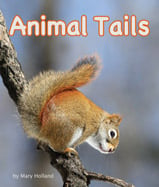Alignment to Standards for NM

| Grade | Number | Standard |
|---|---|---|
| 1 | SC-1)2.2.1.2. | living organisms inhabit various environments and have various external features to help them satisfy their needs (e.g., leaves, legs, claws). |
| 1 | SC-1)2.2.1.3. | differences and similarities among living organisms (e.g., plants, animals). |
| 1 | SC-1)2.2.3.3. | some parts of human bodies differ from similar parts of other animals (hands and feet/paws; ears). |
| 3 | SC-3)2.2.1.1. | an adaptation in physical structure or behavior can improve an organismês chance for survival (e.g., horned toads, chameleons, cacti, mushrooms). |
| 3 | SC-3)2.2.1.2. | plants and animals have structures that serve different functions (e.g., shape of animalsê teeth). |
| 4 | SC-4)2.2.1.1. | different living organisms have distinctive structures and body systems that serve specific functions (e.g., walking, flying, swimming). |
| 4 | SC-4)2.2.1.2. | humans and other living things have senses to help them detect stimuli, and that sensations (e.g., hunger) and stimuli (e.g., changes in the environment) influence the behavior of organisms. |
| 4 | SC-4)2.2.2.2. | a change in physical structure or behavior can improve an organismês chance of survival (e.g., a chameleon changes color, a turtle pulls its head into its shell, a plant grows toward the light). |
| 4 | SC-4)2.2.2.3. | living organisms have developed characteristics to improve chances of survival (e.g., spines on cacti, long beaks on hummingbirds, good eyesight on hawks). |
| K | SC-K)2.2.1.1. | major structures of common livings organisms (e.g., stems, leaves, and roots of plants; arms, wings, and legs of animals). |
| K | SC-K)2.2.2.1. | similarities and differences in the appearance and behavior of living organisms (e.g., plants, animals). |
| K | SC-K)2.2.3.1. | Use the senses (e.g., sight, hearing, smell, taste, touch) to observe surroundings, and describe the observations. |